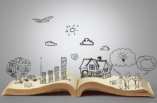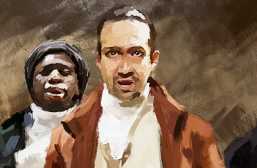Four Techniques of Effective Flash Nonfiction Writers

Those moments in life that are wrought with emotion, intellectual growth, spiritual connection, and wisdom, they stay with us. They are the landmarks in our life path to which we return and ruminate as we try to connect-the-dots between who we were and who we are. Our narratives are littered with reflective phrases. It was then that I realized. Then it hit me. It had never occurred to me before. These moments are the substance of flash nonfiction. A flash piece is typically 500-2,000 words, but still achieves the personal discovery and present-time significance found in a full-length memoir or personal essay. Think of it as orange juice from concentrate. The consumer gets all the nutrition and sweetness in a regular carton of OJ, packed into a condensed space. Just as the juice goes through a concentration process, so too must the short form writer consider how he or she will process and package his or her story. Here are four techniques used by effective flash writers.
4. Begin in medias res
Short form does not allow room for lengthy, expository introductions. The reader is often thrown right into the middle of the action, and a skilled flash writer will fill in the back-story as he or she goes, and only as necessary. In her piece “First Bath,” Sonya Lea describes the first time she bathed her husband during his three-week hospital stay for intense cancer treatment. In the first paragraph she writes, “His shoulders hang low and his back is bowed. His body is forty pounds lighter than it was a few days ago, before the cancer surgery, before the blood loss that caused his mind to empty its memories. His is a body without strength, without vigor, without lust, without intention, without history. A body taken apart and reassembled….” Notice that she does not begin with statements such as when my husband was in the hospital, or I remember the first bath I gave him during his worst treatments. Instead, she skips to the image of his body right before she bathes him. Meanwhile, she slips in bits of pertinent back-story: blood and memory loss associated with cancer surgery. In three sentences, Lea has given the reader who, what, and why—lack of introduction without lack of information.
3. Run on the concrete
Concrete imagery is another way of saying sensory details. A reader can easily become bored or frustrated by banal statements such as, she was so beautiful. This statement has no real meaning because beautiful is an abstract idea that is different for every individual. A more tangible statement would be, I had never seen such warm brown eyes. Concrete images engage readers’ senses, which allows them to better imagine and/or connect with the memoir or essay. Furthermore, the amount of detail to given to these images is a key ingredient to determining the pace of flash piece.
Pacing refers to the speed at which the narrative reads, and is critical in short form. In “First Bath,” Lea does not merely set the scene, but places it on slide and examines it under a microscope. She writes, “I lift his arm onto my shoulder and I rub under as the silky soap makes a trail into the pit, dark curls slick with lather. Once I could lick there, swirling his hair in my tongue, breathing in his scent as if to memorize the salty musk. Now there is no odor, except of chemotherapy, the smell of ice on steel.” A slow pace brings the reader into the moment with the narrator, and allows the reader to experience it for his or herself. As a result, the reader makes his or her own discovery as to the significance of the moment, thus having a greater effect than simply being told, it was hard and sad to see my husband’s body so lifeless.
2. Objectify your emotions
Short form can prove especially challenging when addressing abstract ideas such as love, death, depression, success, or failure. Using objects to develop metaphors for emotional meaning is beneficial in a couple ways: it creates a tangible link to abstract feelings, and it provides enough distance from the writer that he or she doesn’t come across as whiny. Author Jill Christman expertly employs this technique in her essay “The Sloth.” She writes:
I thought I knew slow, but this guy, this guy was slow…I watched the sloth move in the shadows of the canopy. Still reaching. And then still reaching…This slow seemed impossible, not real, like a trick of my sad head…I thought, That sloth is as slow as grief.
Christman’s description of the sloth’s movement is an elegant metaphor for her experience with the grieving process. It allows her to share intense feelings without repetitive I-statements, thus making the piece more relatable for the reader. Moreover, she manages to put her own spin on a common theme while deftly avoiding clichés like healing takes time. To be human is to have emotional baggage, but objects, like hand trucks, are tools the flash writer can use to move and arrange that baggage into a work of art.
1. Ruminate
At the heart of the piece is that bit of aforementioned personal discovery and present-time significance. What happened becomes secondary to why it matters to the writer. However, this is not a conclusion paragraph or a moral-of-the-story section always found at the end. Instead, the flash writer will most likely weave his or her reflections into the what happened throughout the piece. Referring back to “First Bath,” Lea writes, “I soak the cloth in water again, and rinse him, warm droplets sliding down his forearms where I hope to wake something that wants to live….”
She expertly transitions from the physical situation to its emotional significance. This creates a seamless flow more natural to our thought process, and keeps the piece from sounding like a literary analysis essay (e.g., In conclusion, I learned X and Y about my life). Moreover, it encourages the reader to mull over, even reread the piece, to allow its full meaning(s) to sink in.
Altogether, these techniques give flash its robust flavor, often taking the reader by surprise that so much can be said in so few words.
Works Cited
Christman, Jill. (2008). “The Sloth.” Brevity, Issue 26. Retrieved from https://www.creativenonfiction.org/brevity/past%20issues/brev26hotcold/christman_sloth.html
Lea, Sonya. (2012). “First Bath.” Brevity, Issue 40. Retrieved from http://brevitymag.com/nonfiction/first-bath/
What do you think? Leave a comment.











Thank you for this – great resource.
Great list of tips. I started writing flash nonfiction several years ago – before I knew that there was such a thing! I’ve had work published recently, but I still struggled to explain my art to others.
Congrats on getting published! Yes, creative nonfiction is often a difficult art to define. If you haven’t already, you should check out brevitymag.com. It’s lit mag devoted to flash NF.
ooo good tip!
Nice read, concise and useful.
This was informative and well written. I did not even know what Flash Nonfiction was before this article! it was very interesting.
This is a few good tip especially to those new to the blogosphere.
Short but very precise information. Thanks for sharing this one. A must read article!
I’m flattered. Thank you.
This is a good resource for flash enthusiasts.
Thank you all for your kind words. I’m glad you found it helpful. 🙂
Insightful piece! For some reason I’ve always found non-fiction harder to write than fiction, but a lot of the same things you list out can hold true for short fiction, especially number 3. Like others have said, the length of your article is perfectly concise but pacts in a lot of useful information. Good work!
Yes, there’s a lot of crossover in fiction/nonfiction techniques. I’m jealous of you fiction writers, though. I just don’t have it in me. 🙂
I have used some tips from online exercises and techniques to write some short nonfiction pieces and will submit them for publication.
Great list. I especially think the tip about starting in media res is super useful!
Over the last year or so I have become more interested in creative nonfiction and the essay form. This list is a great thing to have as a reminder of what keeps structure and realism in the written memory. It’s too easy to become lost in description when trying to recreate the past for someone else’s eyes, so your point on delving into “why” is especially important! To weave that “why” throughout the text is something that makes it shine.
Given the speed of today’s transport and lifestyle, it sometimes seems as if certain kinds of texts, perhaps longer and more thought-engaging ones, have become obsolete. Mark Augé, in his analysis of Supermodernity, argues that we are offered texts that are more and more like the short magazine articles we read on trains or the brief information given to us at the supermarket, reminding us of the need to live on the scale of today’s world. Perhaps more positively, flash fiction can resemble more epigrammatic forms of poetry or focuses on the reason why (as opposed to a more inessential and material focus on the what). Regardless, I thought this was a well-written and interesting little article that was worth the read. Thanks!
Great article, really enjoyed it! Writing takes a helluva lot out of you. For me, it’s sometimes exhausting to the point of painful. At other times, however, getting your work published for all to see is an absolutely fantastic feeling and propels you to write the next article. A lot of good points in this article!
This comment utterly resonates with me.
This is a great article for nonfiction writers. I find some of these strategies useful even for fiction writing, so you can have plot points written when you eventually write the beginning of the story.
Sonya Lea’s 2012 piece ““First Bath” is an apt example to demonstrate the points made in this article. Recently I’ve read William Zinsser’s _On Writing Well: The Classic Guide to Writing Nonfiction_. Some of the things pointed out in this article by Donna Margara remind me of what I read in Zinsser’s book. /// The four techniques are listed starting with 4 instead of 1. I wonder if the author had a particular intention in doing so.
Great article. I am always interested in hearing creative non-fiction authors talk about their processes. Finding tips on this style of life-writing can be arduous, so thank you for writing this.
This is a lovely piece. I’ve always had a soft spot for flash fiction and how it forces writers to really examine the message they want to convey. Adhering to such a small word limit can be rough, especially when the story being told is personal in nature, but the results can be powerful and emotionally honest in a way that stands apart from some longer works. Your advice is on point and the article is one that I’ll be returning to.
These are great tips for any style of writing really. I’m not a huge fan of flash fiction but I do enjoy writing Creative Non-Fiction.
Lovely article, very powerful choice of quotes. I do it, and I teach it but it’s always good to be reminded how to write well by someone else every now and then 🙂
This was really helpful! Sometimes it’s not enough to simply read good writing. It really helps to have someone outline points like these. Thank you!
Flash nonfiction demonstrated by an article resembling flash nonfiction. Expertly written, concise and informative. Thank you.
I have recently found myself in love with writing and have been looking for tips for some of the smaller works. I am sure people out there will understand this, but I like works. I love long sentences and writing loads and loads. Sadly 500-2000 words means that can’t happen. These tips are great and explained well. Thank you
Thanks for the tips!
Great article. I typically don’t use this flash style when writing – I’ve done it a few times out of necessity – but it’s still an invaluable tool for all writers. As an exercise, it forces one to distill an experience or thought into its basest form. It’s both surprisingly simple yet difficult, particularly when it comes to execution. Often my short works don’t always end up feeling like they’ve held any actual meaning rather than simply relating a series of events.
Thanks for the tips!
I’ve never been one for non-fiction but I might be changing my mind after seeing these techniques. Perhaps diving into it for myself will give me new perspective.
This is fantastic; it’s informative and concise, and very well written. I hadn’t heard of those authors before but I will definitely be checking them out. From the snippets you included, I’m already in love. Thank you for putting this together, Donna!
Thanks for the insight and the resources! Very helpful!
I’ve dabbled in FF for quite some time now. I recently rekindled my passion and wanted a quick refresher to stoke the fire. This hit the spot. Thank you! Additionally, I’d never considered framing my FF from a nonfiction approach – which is even more helpful because I can see myself linking this to my professional teaching endeavors. So, many thanks! 🙂
One thing I experimented with in the creative non-fiction class I took last semester was to write a two-page meditative essay. It really forces you to critically look at your subject when you only have 1,000 words or so at your disposal!
Very interesting article that I’m going to pass along to my students. They, at times, have a hard time understanding how to keep their writing brief and concise. I hope this helps them.
On another note, I saw that someone mentioned brevitymag.com, a good source of short nonfiction and craft articles. Their limit, I believe, is 750 words.
This is a great take on a tricky-to-do artform. When witnessing, and subsequently writing about these profound moments in life in such a way, it is markedly difficult to stray from detailed explanations and head towards concision. These are very useful and practical tips, easily applicable to one’s own works right away. Kudos.
I like the examples you used to back up your points! A lot of them were pretty great. Excellent post. Flash fiction is certainly hard to master.
I really enjoyed this little advice column and it is similar to what I give to my non-major students. Flash fiction has always been my favorite style to write in and was the style of my first publication so I am quite partial to it.
I particularly enjoyed the author’s analogy that flash fiction is like “orange from concentrate.” This is quite effective. I usually look at flash fiction like this: if I were to ask myself, “What is it you’re trying to say?” then the answer should be, “No more than I need to. If that.”
Flash fiction is like a memory. Memories are usually just flashes, singular moments of clarity which represent a larger, jumbled recollection of an event in our lives. Since we cannot recall every minute detail of our lives in our mind, we distill it down to the important parts, the symbolic parts, the meaningful parts before turning them into memories. Flash fiction sort of mirrors this phenomena of the mind. It shrinks a larger story down into a smaller story, thick with meaning and symbolism, which doesn’t paint the entire, detailed chain of events within which the flash story exists.
Very helpful article! Not just for flash fiction, but great tips for writing in general. There is something so satisfying about finding that one image that conveys everything you mean to say, a mental picture worth a thousand words.
I’m not very familiar with flash fiction, now I’m really interested!
I write fiction, but I’ve dabbled in nonfiction recently. It’s very different than fiction, and I find it rather difficult to grasp.
These tips were extremely helpful.
Great Article.
Just learning the craft and found this very helpful…much yet to learn…thank you.
My only hesitation with this article is that the ideas may lend themselves to the formulation of a certain “way” to write. While I think this advice is sound, I do think that people should be praised for the honesty of their voices and not necessarily pigeonhole themselves into “successful” strategies. Then again, most people write to be published, so I suppose it doesn’t necessarily matter if you bend your natural voice a bit…
Good stuff, thanks for the advice!
Great tips for flash fiction. I’ve tried my hand at it a few times but there’s certainly a learning curve, and this walk through will probably help me next time I sit down to try writing flash again. To me flash fiction seems like it bridges the gap between prose poetry and short story. Prose poetry is usually shorter than fiction, even flash fiction, and the mantra of a poet is “economy, economy, economy.” In flash fiction we are forced into a similar type of concision, resulting in poetic -like visceral imagery.
Enjoyed this information. Thank you for sharing.
On your second point, James Wood has basically an entire chapter in How Fiction Works on using just enough detail to “get a character walking.” Very much along the lines of using concretion to get a story walking. He also says, in a chapter on detail, to use details that “draw abstraction towards itself then seems to kill that abstraction with a puff of palpability.”
Great tips, especially the one on sensory details. I’ve read books that made me think, “If I see another sentence about how beautiful/gloomy/intriguing something or someone is, I’m going to scream.”
I found this site precisely because this essay came up on Dr. Google. I am a poet whose poems are rejected occasionally for ‘not being poems’. I have been rewriting some of these as ‘flash essays’, a phrase I came across only recently. I am unschooled as a writer and want to know so much more. I was looking for a textbook on flash essays, if such a thing exists. Could anyone recommend something?
I disagree that a first-person rumination is necessary to a flash essay. I do believe metaphor or juxtaposition of ideas is. Could New Yorker-like journalism qualify if short enough?
I would like to be in a coffee shop with all of you to ask more.
Immeasurably helpful. Thanks!
I really like Joan Didion’s approach – she focuses on images that she feels attached to. Images that she has captured with her mind. She writes about them in hopes to understand them herself. Easily my favourite non-fiction writer! Although, I must read First Bath! From the snippets in this article I am definitely intrigued.